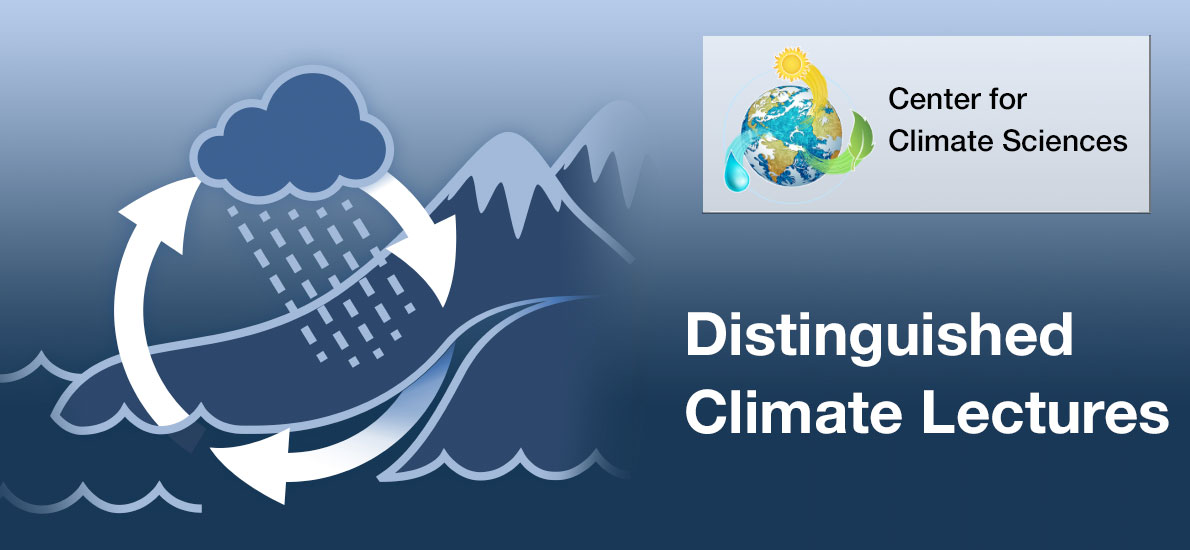Seminars
Message in a Bottle: How Laboratory Experiments Help Disentangle Aerosol-Cloud Interactions Relevant to Cloud Optical Properties
January 17, 2024
| 186 von Karman (in person) & WebEx, 3:00 pm PT
› view lecture

About this Lecture

Clouds are colloids consisting of droplets and crystals, formed on aerosol particles, all interacting within a turbulent environment. Their optical properties profoundly influence planetary climates. Perhaps the fundamental problem of cloud
physics is to understand what destabilizes the colloid to produce precipitation. That depends on physical and chemical processing of the aerosols, condensation growth of cloud particles in a fluctuating environment influenced by entrainment, and the collisional growth of cloud particles. This
is the “microphysical” complexity that ultimately must be connected to cloud-scale dynamics.
To put it another way, macroscale dynamics
and thermodynamics dictates the amount of condensed mass in the cloud, but in order to
know cloud optical and precipitation properties, we have to know how that mass is distributed amongst droplets and crystals. There is no escape: microphysics matters for macroscopic cloud properties of relevance to climate.
Over the last decade we have explored these microphysical interactions using the “Pi convection- cloud chamber” – a pi-cubic-meter turbulent
cloud generated by feeding aerosols into a water- supersaturated environment created by moist Rayleigh-Benard convection. All microphysical processes that are usually considered “sub- grid-scale” even in detailed models, are fully represented, so we can think of this as a single “cloud pixel.” The resulting cloud microphysical and optical properties are similar to those observed in stratocumulus, and the Pi chamber has provided insight into the role of turbulence on cloud droplet activation and growth, the formation of persistent mixed-phase clouds, and the cloud dispersion indirect effect. Now a growing collaboration of universities, national laboratories, and industry/ international partners has been developing a design for a much larger convection-cloud chamber that will allow cloud particle growth by collisions in addition to growth by condensation. That capability will allow interactions within a fully-coupled aerosol- cloud-precipitation system to be explored and directly compared to detailed microphysics models. We envision that this would exist as a national
user facility available to the atmospheric research community for advancing our understanding of cloud microphysical processes relevant to key uncertainties in weather and climate models.
About

Raymond Shaw is University Professor in the Department of Physics and director of the Atmospheric Sciences Program at Michigan Technological University. Raymond’s PhD is from Penn State University and he was a postdoc in the Advanced Study Program at NCAR. He is a fellow of the American Physical Society. His research interests are in the physics of clouds, including aerosol-cloud interactions, effects of entrainment and turbulence on clouds, and ice nucleation. Much of the research involves development and use of instruments and laboratory experiments to explore cloud processes; for example, he helped develop the airborne Holographic Detector for Clouds (HOLODEC) and the Pi Convection-Cloud Chamber. Raymond’s hobbies include biking and skiing, reading and speaking Spanish, and serving in the community.
